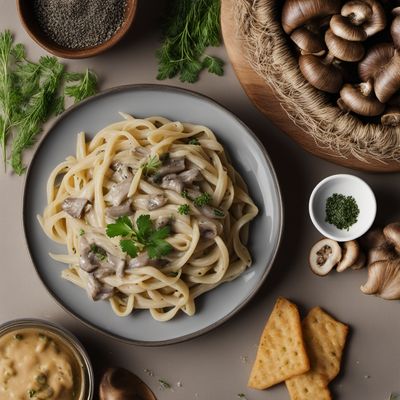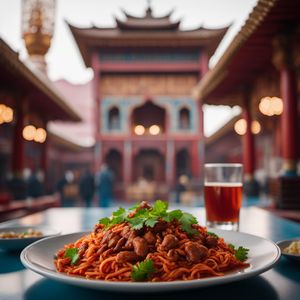
Dish
Shivit oshi
The dish consists of homemade noodles, which are made by mixing flour, eggs, and water. The noodles are then rolled out and cut into thin strips. The spicy meat sauce is made with ground beef or lamb, onions, garlic, and a variety of spices such as cumin and paprika. The dish is typically garnished with fresh herbs such as cilantro or parsley.
Origins and history
Shivit oshi is a traditional Uzbek dish that has been enjoyed for generations. It is believed to have originated in the rural areas of Uzbekistan where people would make their own noodles and use local ingredients to make a hearty meal. The dish has since become a popular comfort food in Uzbekistan and is often served during the winter months.
Dietary considerations
This dish is not suitable for vegetarians or vegans as it contains meat. It is also not suitable for those who are gluten intolerant as it contains wheat noodles.
Variations
There are many variations of this dish, some of which include adding vegetables such as bell peppers or tomatoes to the sauce. Some people also like to add a dollop of sour cream to the top of the dish to cut through the spiciness of the sauce. Others like to add different types of meat to the sauce such as chicken or pork.
Presentation and garnishing
Shivit oshi is typically served in a large bowl with the noodles and sauce mixed together. It is often garnished with fresh herbs such as cilantro or parsley. Some people also like to add a sprinkle of red pepper flakes for a bit of heat.
Tips & Tricks
When making the noodles, be sure to roll them out as thinly as possible to ensure that they cook evenly. You can also add a pinch of salt to the noodle dough to give it a bit of flavor. When making the sauce, be sure to use fresh spices for the best flavor.
Side-dishes
Shivit oshi is typically served as a main course and is often accompanied by a simple green salad or roasted vegetables. Some people also like to serve it with a side of crusty bread to soak up the spicy sauce.
Drink pairings
This dish pairs well with a full-bodied red wine such as Cabernet Sauvignon or a cold beer.
Delicious Shivit oshi recipes
More dishes from this category... Browse all »

Abura soba
Japanese cuisine

Ants Climbing a Tree
Chinese cuisine

Asahikawa ramen
Japanese cuisine

Biangbiang Noodles
Chinese cuisine

Bibim guksu
Korean cuisine

Bukkake udon
Japanese cuisine

Burnt Miso Ramen
Japanese cuisine

Bánh canh
Vietnamese cuisine





